The flag of Bhutan is a captivating blend of colors and symbols that encapsulate the essence of the Himalayan kingdom.
The flag serves as a visual narrative, intertwining Bhutan’s unique geography, ancestral beliefs, and aspirations into a singular emblem that resonates with its citizens and captures the attention of onlookers worldwide.
Bhutan Flag
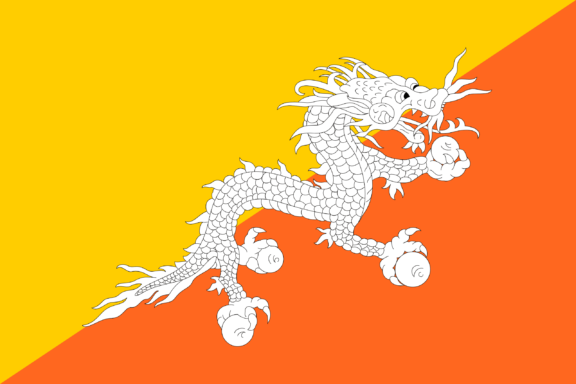
The flag of Bhutan is divided diagonally, featuring a white dragon in the center. Known as the Druk, this dragon is a national emblem that signifies the country’s protection.
The dragon clutches jewels in its claws, representing wealth and prosperity. The design creates a visually appealing and symbolically rich representation of Bhutan’s unique identity and values.
Bhutan Flag: Color Palette
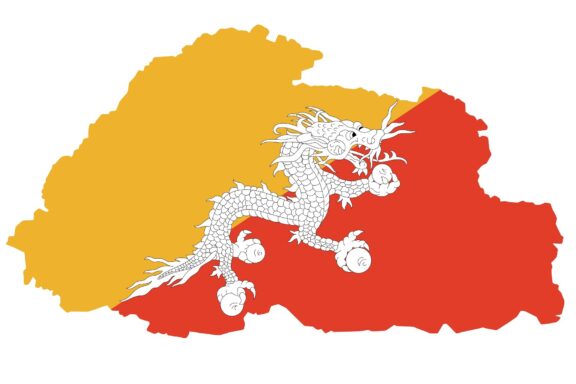
Bhutan Flag Emoji: 🇧🇹
The color palette of Bhutan’s flag is both striking and meaningful. The specific hues have been carefully chosen to encapsulate various facets of the nation’s identity. The following segment will delve into the symbolism and significance behind each color.
The colors enhance the flag’s visual appeal and imbue it with layers of meaning. Each hue unfolds its tale as we explore further, adding depth to our understanding of Bhutan’s spirit and chronology.
Meaning of Each Color
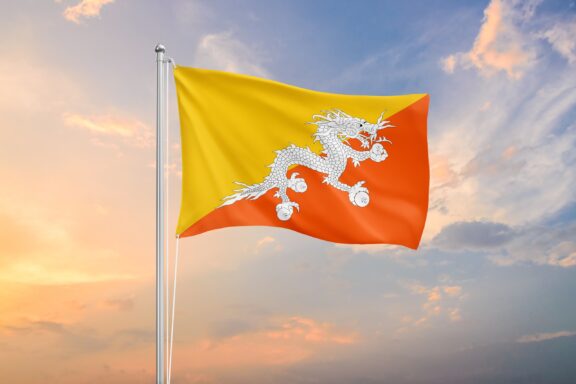
Yellow
In the upper left portion of the flag, yellow signifies the cherished civil traditions and the monarchy’s central role in Bhutan. This shade is esteemed in local customs, marking its prominence in various ceremonies and religious observances.
Furthermore, its radiant presence is a beacon of continuity and stability in the ever-evolving Bhutanese landscape.
Orange
Dominating the lower right quadrant, orange is a tribute to Buddhism, Bhutan’s primary religion. This hue captures the profound teachings of the Buddha, underscoring the spiritual depth and ethical values of the Bhutanese.
The orange also exudes a warmth that resonates with the nation’s welcoming nature and deep-rooted sense of community.
The White Dragon
The symbolic dragon on the flag isn’t just a lore figure but embodies Bhutan’s spirit. It symbolizes the protective forces, unwavering loyalty, and the nation’s rich tapestry of myths and legends.
Representing the Bhutanese people’s dedication, the dragon also stands as a guardian, ensuring peace and prosperity.
Bhutan Coat of Arms
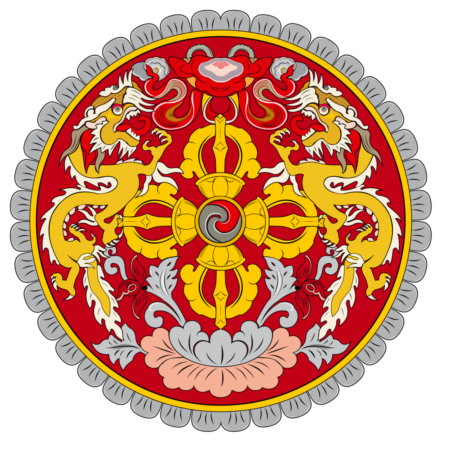
The emblem of Bhutan is a detailed portrayal of the nation’s ethos. Encircled by lotus leaves, it signifies purity aligned with Buddhist beliefs.
Central to the emblem are two dragons positioned around a dharmachakra or the “wheel of dharma,” a potent symbol denoting the path to enlightenment.
These dragons, while reminiscent of the Druk on the flag, adopt a broader protective role in the emblem. They are not only the country’s guardians but also the defenders of the dharmachakra, emphasizing Bhutan’s unwavering commitment to Buddhist teachings.
Unlike the flag, the emblem offers an intricate insight into Bhutan’s spiritual and cultural essence, weaving together its diverse beliefs and traditions.
Historical Significance and the Meaning Behind Changes
The current Bhutanese flag, officially adopted in 1969, evolved from earlier designs with less uniformity and clear symbolism. The dragon, for instance, was once green and lacked the jewels it now holds.
The change to a white dragon aimed to symbolize purity and loyalty better, aligning more closely with Bhutanese cultural values.
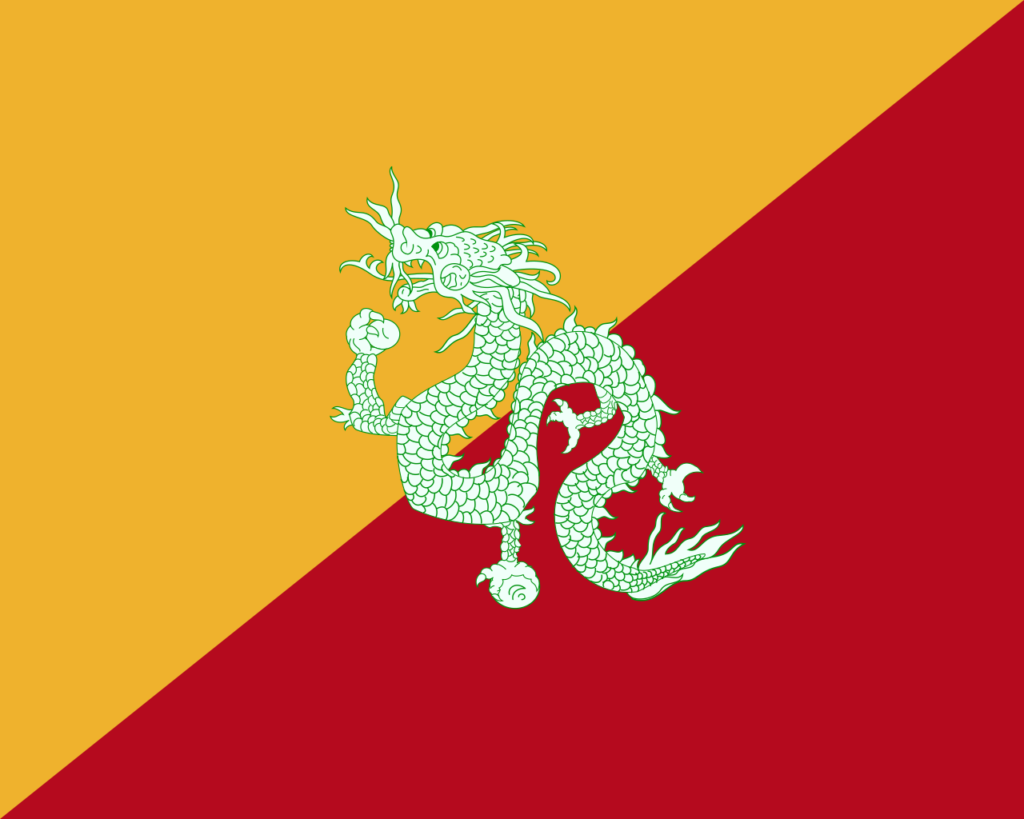
The 1969 standardization by Bhutan’s National Assembly brought the flag’s design consistency. This move also locked in the now-familiar orange and yellow hues for Buddhism and the monarchy.
The shift in colors aimed to represent more accurately the integral elements of Bhutanese society, particularly its governance and spiritual philosophy.
The flag’s alterations over time have not merely been cosmetic but have sought to capture the essence of Bhutan as it navigates its own developmental and spiritual paths. These modifications mark the country’s evolving identity and what it cherishes.
Overall Symbolic Meaning of the Flag
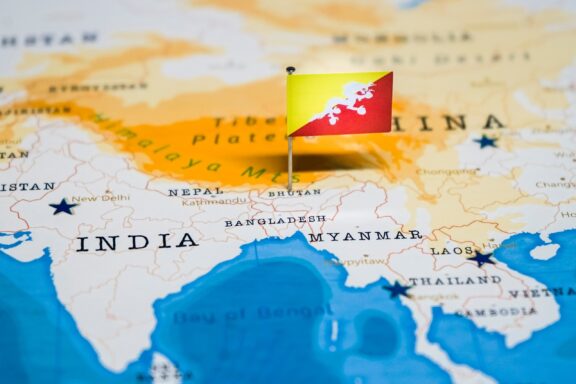
The flag of Bhutan acts as a harmonious blend of profound national values and cultural significance. The intertwined elements of spirituality and governance, embodied by the dragon and the background, merge into a unified symbol that is a testament to the nation’s core beliefs and aspirations.
Similar Flags to the Flag of Bhutan
The flag of Bhutan is fairly unique, making it difficult to find exact replicas in the world’s array of national flags. However, some flags share certain similarities in terms of symbolism or layout.
Wales
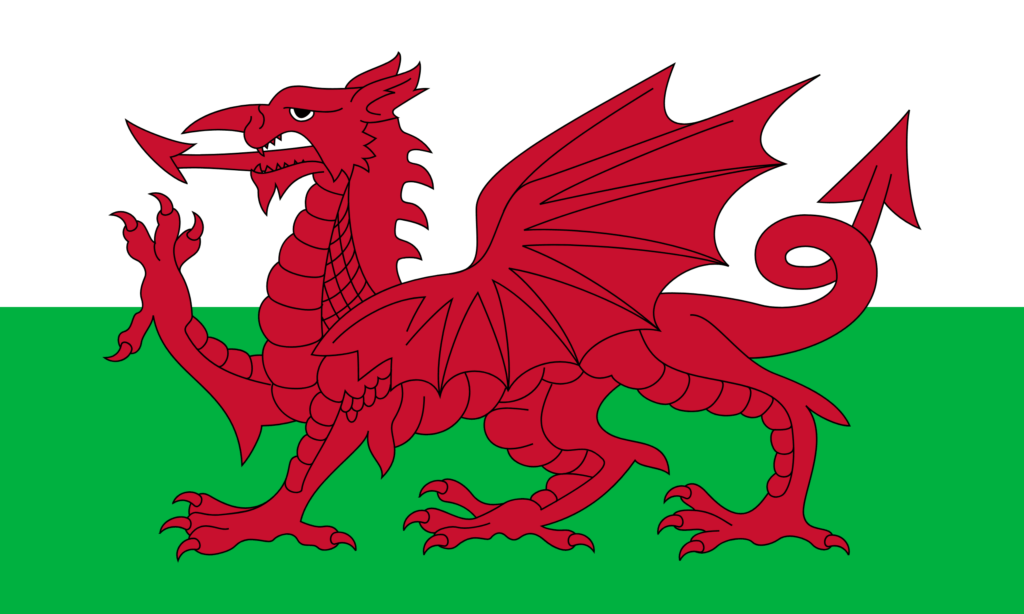
The flag of Wales boasts a vivid red dragon, a symbol deeply entrenched in Welsh folklore and history. The dragon represents power, wisdom, and sovereignty.
While Bhutan and Wales have chosen to feature dragons on their flags, the similarities essentially end there. The dragon in the Welsh flag is intricately designed, full of menace and majesty, and is set against a backdrop of green and white horizontal stripes.
Sri Lanka
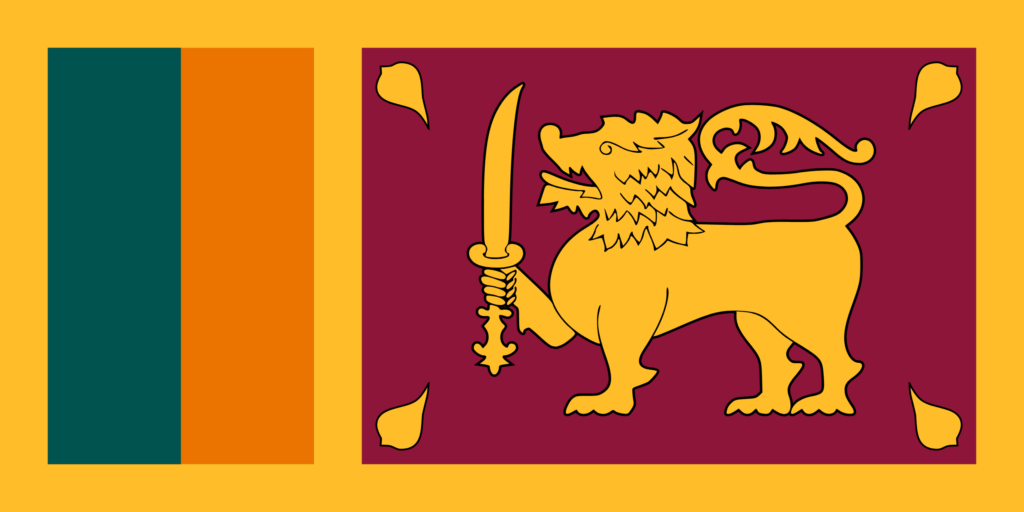
Sri Lanka’s national flag is adorned with a golden lion holding a sword, symbolizing bravery, strength, and national sovereignty. This is similar to Bhutan’s dragon, which is also a guardian figure.
In addition to the lion, the Sri Lankan flag features colorful stripes and a leaf motif, representing the country’s diverse population and natural beauty.
Continue reading about the meaning of the Sri Lankan flag.
Conclusion
The flag of Bhutan is a powerful emblem, uniting various elements to convey a collective national message. It resonates with its citizens while distinguishing itself on the global stage.
Serving as a mirror and guidepost, the flag epitomizes Bhutan’s unique identity and journey forward.
Image Sources and Copyright Information
- Bhutan National Flag Against Sky: © zmotions/Shutterstock
- Bhutan Flag Pin on Map: © hyotographics/Shutterstock